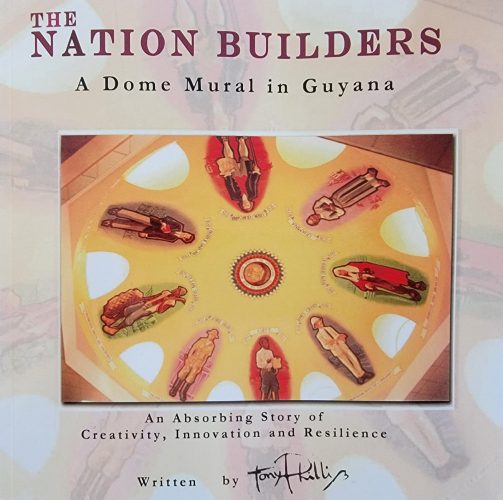Dear Editor,
We appear to be at an interesting moment in the telling of the story of the long Guyanese experience. In recent years, we have seen well researched works on the Guyanese story attract international attention and deserved high praise. For example, Randy M. Browne’s Surviving Slavery in the British Caribbean, which focused on the 19th century Berbice experience, won the 2019 Elsa Gouveia Book Prize from the Association of Caribbean Historians. In 2021, Marjoleine Kars won the Cundill History Prize for The Untold Story of the Berbice Rebellion Blood on the River—A Chronicle of Mutiny and Freedom on the Wild Coast (2020). Currently, there are concerns about the continued efforts by Guyana’s political class to “play fast and loose” with Guyana’s history. Of particular concern is what appear to be deliberate efforts at erasure. If those efforts are not deliberate, then they are examples of the social danger that arises from lazy history. Good history requires rich evidence and engaging dissemination. Primary evidence, like eye-witness reports, and memoirs are crucial when telling the Guyana’s post-independence story.

Tony Phillips’ The National Builders: A Dome Mural in Guyana is a solid accumulation of primary evidence. It is an eye-witness perspective on the creation of one Guyana’s significant post-independence works of public art and beautification. The National Builders: A Dome Mural in Guyana is a valuable contribution to study of public art and beautification in Guyana’s post-independence story. It is a story about the aesthetics of the state. It is also an insider’s perspective. And this helps us to better understand the zeitgeist (the spirit of the times) —the early post-independence period (1966-1976) when the nation was engaged in popularly supported efforts at decolonization and accelerating efforts to “create” the Guyanese identity. This story is told through twelve (12) chapters and seventy-four (74) illustrations. The story covers themes such as research and development, planning the project, and techniques. In the process, Tony Phillips shares the genesis of the idea which took place in the office of Hugh McGregor Reid, the architect commissioned by Barclays Bank DCO in 1973, “to design the renovation of Barclays Bank, Water Street head office” (p.6). He situates that conversation about a mural in the banks’ ceiling in the context of international and domestic discourses about the place of art in social change.
In an engaging style, Phillips walks us through the tight deadlines and sensitivities associated with approval of the project and the influences behind the design. He brings you into the conversations and shares the sketches that led to the selection of the characters who were “associated with and accepted for achievements in forging Guyana’s progress, going back as far as when our country’s borders were first established” (pp. 18 & 19). The centerpiece was Makanaima— “the great ancestral Spirit of the Amerindians, our indigenous peoples.” The eight (8) characters include: Laurens Storm van Gravesande, “Governor, builder, patriot, visionary;” Joseph Alexander Luckhoo, “Barrister, Judge, innovator;” Cuffy (Kofi), “Guyana’s national hero, leader of the 1763 Rebellion;” James Crosby, “Humanitarian, Protector of Immigrants;” Dr. George Giglioli, “Malariologist, pioneer in public health;” Patrick Dargan, “Local creole, Barrister, defender of the people;” Quamina, “Slave Deacon (deacon to Reverend John Smith who was removed) organized runaway slaves in church buildings; passive resistor;” and Ocean Shark, “Local of mixed descent. Pork Knocker Hinterland Adventurer. The type of adventurer seeking gold and diamonds and maintain numerous families in the bush” (pp. 20 & 24).
In addition, The Nation Builders: A Dome Mural in Guyana also provides solid biographical notes on the key players in the story of this now iconic mural – Tony Phillips, Stanley Greaves, Dr. Robert “Bobby” Moore, and Hugh McGregor Reid. The Nation Builders: A Dome Mural in Guyana is a valuable contribution to the Guyanese art history, especially the place of the mural in that story. This is timely given recent developments in the use of murals and other forms of public art in urban beautification efforts. In The Nation Builders: A Dome Mural in Guyana, Tony Phillips succeeded in his mission to “write an interesting story in an easy conversation-like style.” Thank you, Tony. We needed this. We continue to look to the University of Guyana for innovations in the teaching, study, and dissemination of robust, well researched history—the type of historiography that attracts national and international attention and garners deserved recognition. That is the topic for another conversation.
Sincerely,
Vibert C. Cambridge, A.A., Ph.D.





